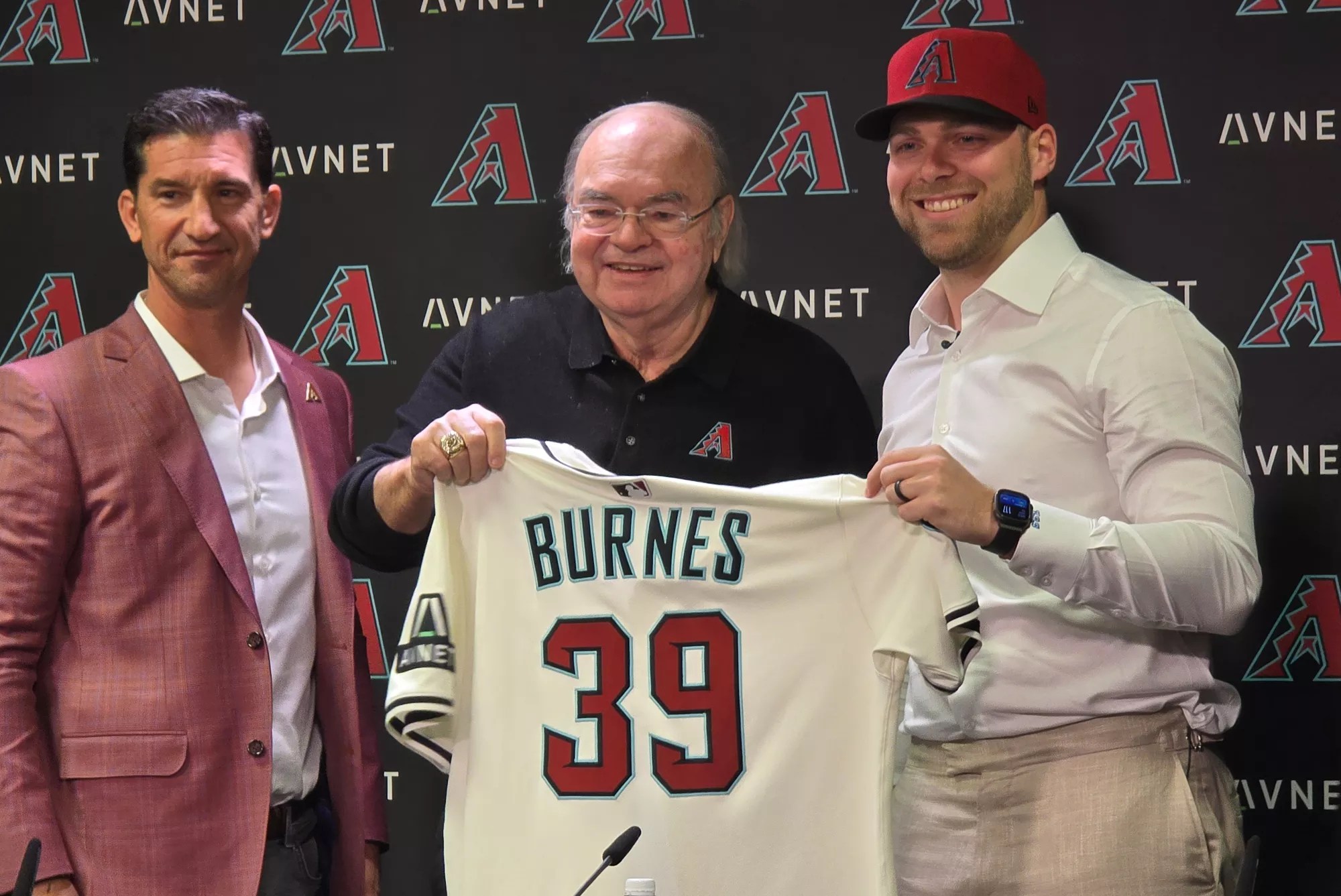
Zach Buchanan

Audio By Carbonatix
On Friday, Diamondbacks fans got the bad news they’d been expecting. Corbin Burnes, the star pitcher the team signed this offseason for six years and $210 million, needs reconstructive elbow surgery. He will miss the rest of the season and possibly the rest of next year as well.
Arizona fans had anticipated such a blow ever since the 30-year-old Burnes walked off the mound in the fifth inning of a June 1 start at Chase Field. He had “right elbow inflammation,” which any savvy baseball fan familiar with the sport’s pitching injury epidemic knows to be a precursor to requiring reconstructive surgery. Burnes underwent an MRI and now, soon, he’ll undergo the knife.
“The news isn’t great,” manager Torey Lovullo told reporters, leaning heavily on understatement.
It’s a tremendously shitty bit of luck. The Diamondbacks already had been struggling despite an impressive-on-paper roster and a franchise-record payroll. Now, without their star pitcher and coming off a brutal stretch that had people speculating about Lovullo’s job security, they face an even steeper climb toward a playoff spot.
But really, Diamondbacks fans might have expected this the moment Burnes signed. After all, the team’s track record with signing marquee pitchers is outlandishly unlucky. It seems that every time the team shells out for a big-name pitcher, things go sideways.
Consider the past 10 years of major pitching acquisitions:
Zack Greinke: Signed before the 2016 season to a six-year, $206.5 million deal – an MLB record at the time – Greinke had a mediocre first year with the club as the Diamondbacks lost 93 games. Team owner Ken Kendrick fired his manager and front office heads as a result. Greinke pitched excellently the rest of his time in Arizona, helping lead the team to the playoffs the next year. But his deal was so big, the Diamondbacks still had to pay down money in order to trade him in the midst of a strong season in 2019.
Madison Bumgarner: The next time the Diamondbacks were in the market for a big-name free-agent starter was prior to the 2020 season. That offseason, they lavished five years and $85 million on Bumgarner, the former San Francisco Giants ace. Bumgarner was god-awful from the get-go, resistant to coaching and clearly in physical decline. The Diamondbacks went 151-233 in Bumgarner’s first three years with the team, including enduring a painful 110-loss season in 2021. After Bumgarner posted a 5.23 ERA in 69 starts, the team released him in 2023 with more than a year left on his deal.
Eduardo Rodriguez: Coming off a surprise trip to the 2023 World Series, Diamondbacks general manager inked Rodriguez to a four-year, $80 million deal to bolster what had been a shaky starting rotation. Rather than bolster anything, Rodriguez spent the first four months of the season hurt. Though the Diamondbacks won more games than the year before, they missed the playoffs. This year, Rodriguez has a terrible 7.05 ERA in nine starts and is currently on the injured list. He’s due back soon.

Jordan Montgomery pitched terribly in his first season in Arizona and will be hurt for all of his second.
Lachlan Cunningham/Getty Images
Jordan Montgomery: Signing Montgomery was a win-now move for Kendrick and the Diamondbacks, who handed him a one-year, $25 million contract just before Opening Day last year. Unlike Rodriguez, he mostly remained healthy in his first season. Like Rodriguez, he pitched horribly, recording a 6.23 ERA in 117 innings and finishing the season banished to the bullpen. After the 2024 season, Kendrick publicly bashed the Montgomery signing – and blamed himself for making it – only for Montgomery to (understandably) exercise a contract option that pays him $22.5 million this year. That’s money he’ll make without pitching, though: In spring training, Montgomery hurt his elbow and required surgery that knocked him out for the season.
With the possible exception of Greinke, Burnes is better than all of these previous forays into signing pricey pitchers. Before his injury, he certainly looked to be worth the money, having recorded a 2.66 ERA in 11 starts. He was pitching like the ace he’s paid to be. There are still five years remaining on his deal, though how good he’ll be when he comes back is an open question.
Already, he’ll spend most of his first two years in Arizona on the shelf. Whether he’ll be the same after that – throwing as hard, with the same bite on his secondary pitches, able to handle a high innings load – is far from certain. By 2027, when Burnes can reasonably be expected to be fully healthy again, he’ll be 32. Many pitchers start to lose a step around that age.
Every team deals with injuries, especially to starters. The most successful clubs – the Dodgers, the Yankees – build a pipeline of talent from the minors to fill any gaps. The Diamondbacks haven’t been as successful developing pitchers. Whether or not you spend on big-time stars, you better be able to produce homegrown talent.
Still, it’s perfectly reasonable for the Diamondbacks and their fans to expect better returns from their free-agent pitchers. Few fans would want Kendrick to keep his pocketbook closed when there’s a chance to sign a superstar, especially when the team seems so close to contention. But given how sour every major pitching signing seems to turn in Arizona, it’d be hard to blame Kendrick for passing the next time an ace is on the open market.
They haven’t worked out. And until Chase Field is spiritually cleansed – Burning sage? Sacrificing a goat? – why would anything change?